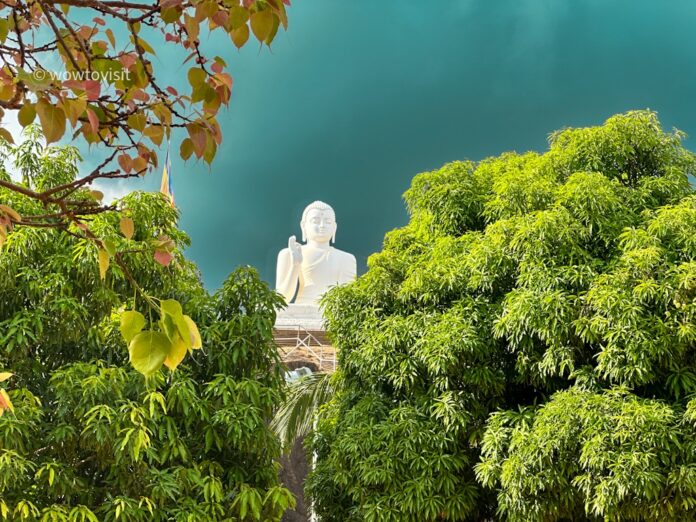Mihintale Temple in Sri Lanka
Mihintale temple holds a significant place in the rich history and culture of Sri Lanka. Situated near the ancient city of Anuradhapura, it is believed to be the place where Buddhism was first introduced to the island nation. With its captivating architecture, serene ambiance, and natural surroundings, Mihintale stands as a revered pilgrimage site and a testament to Sri Lanka’s Buddhist heritage.
Historical Significance
Arrival of Buddhism in Sri Lanka(The Arrival of Arahant Mahinda)
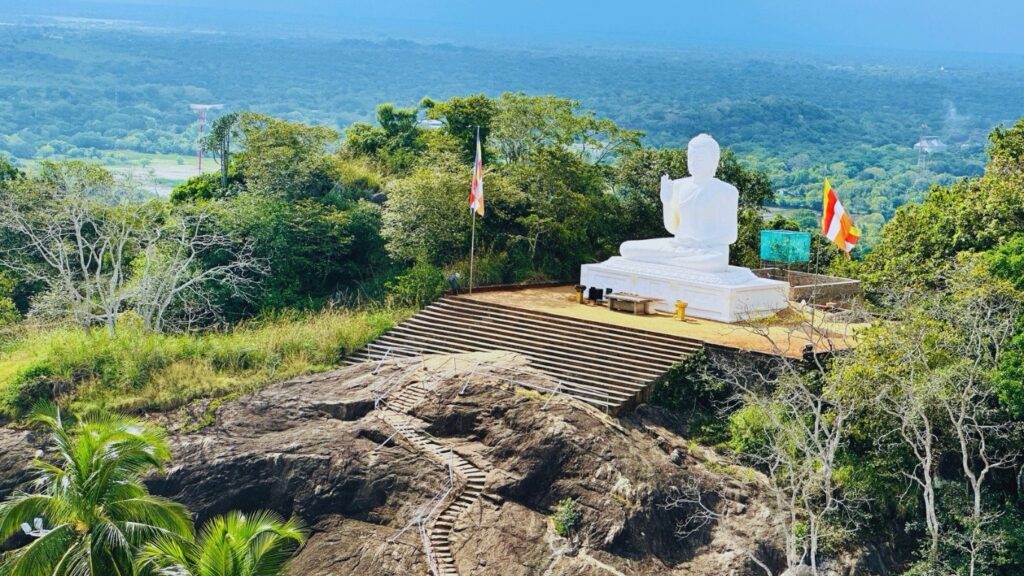
According to historical records and chronicles, in the 3rd century BCE, Arahant Mahinda arrived in Sri Lanka on a mission to propagate Buddhism. He was accompanied by a group of Buddhist monks who were sent by Emperor Ashoka to spread the teachings of the Buddha beyond the borders of India.
Arahant Mahinda’s encounter with King Devanampiya Tissa of Sri Lanka took place on the mountain of Mihintale, which was then a royal hunting ground. It is believed that Arahant Mahinda, standing on the rock known as Aradhana Gala, engaged King Tissa in a profound dialogue that led to the conversion of the king and subsequently the entire country to Buddhism.
Conversion of King Devanampiya Tissa
Impressed by Mahinda’s teachings, King Devanampiya Tissa and his retinue embraced Buddhism, making Sri Lanka the first officially Buddhist country in the world. This historic event took place at the exact location where Mihintale temple now stands. The king’s conversion led to the establishment of Buddhism as the predominant religion in Sri Lanka, shaping its culture and society for centuries to come.
Establishment of Mihintale as a Buddhist Pilgrimage Site
Following King Devanampiya Tissa’s conversion, Mihintale became a sacred site and a center for Buddhist pilgrimage. The area surrounding the temple was developed to accommodate monks and devotees, creating a vibrant monastic complex. Today, Mihintale remains an important pilgrimage destination, attracting visitors from all over the world who seek spiritual enlightenment and a connection to Buddhism’s roots.
Architecture and Layout
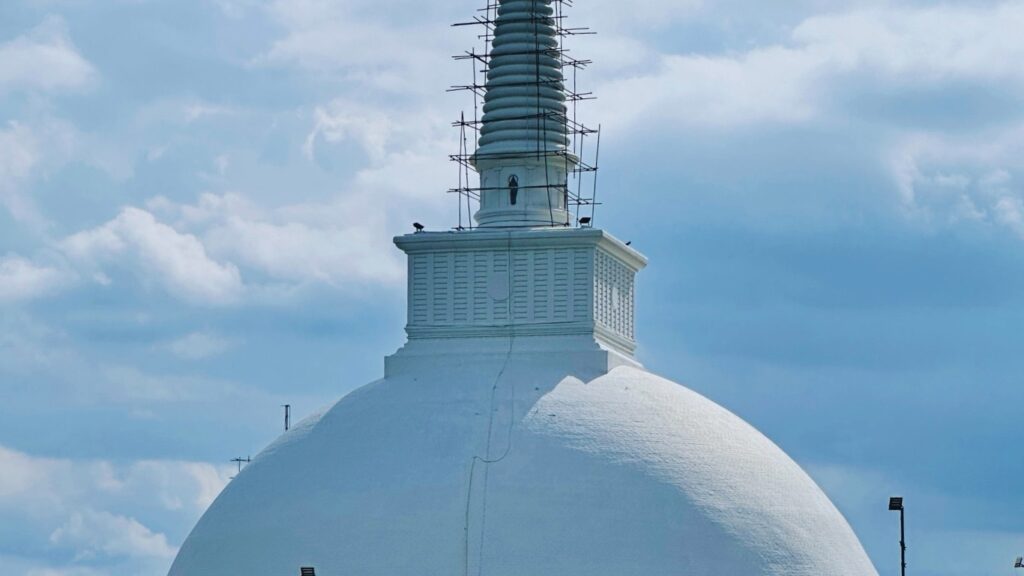
Mihintale temple complex showcases exquisite Buddhist architecture and design. Spread across a sprawling hill, it consists of various structures and monuments that symbolize different aspects of Buddhist practice.
The complex is adorned with numerous dagobas and stupas, serving as reliquaries and symbols of enlightenment. These impressive structures, with their intricate carvings and architectural grandeur, evoke a sense of awe and reverence.
Image houses and shrines within the temple complex house statues of the Buddha and other significant figures in Buddhism. These sacred spaces provide an opportunity for devotees and visitors to pay their respects and engage in religious rituals.
Viharas and meditation halls are also present, providing spaces for contemplation and spiritual practice. The serene atmosphere of Mihintale, surrounded by lush greenery and panoramic views, creates an ideal environment for meditation and reflection.
Cultural and Religious Importance
Mihintale holds immense cultural and religious importance for the people of Sri Lanka. It serves as a revered pilgrimage site and an embodiment of the country’s Buddhist heritage.
Buddhists from all over the world visit Mihintale to pay homage to the place where Buddhism took its first steps in Sri Lanka. Pilgrims climb the steps leading to the temple complex, engaging in religious rituals and seeking blessings.
The temple complex also hosts annual festival celebrations, attracting large crowds of devotees. These vibrant events feature colorful processions, traditional music, and cultural performances, creating a festive atmosphere that showcases the rich traditions of Sri Lankan Buddhism.
Mihintale plays a crucial role in preserving Buddhist traditions and teachings. Monks residing in the temple complex continue to practice and propagate Buddhism, ensuring its continuity and vitality in Sri Lanka.
Inscriptions and Notable Features
Mihintale temple complex is not only renowned for its historical and architectural significance but also for its inscriptions and notable features that provide insights into the ancient Buddhist civilization of Sri Lanka.
- Kantaka Cetiya
One of the remarkable structures within the temple complex is the Kantaka Cetiya, also known as the Chulamanicetiya. This stupa is believed to contain relics of the horse Kantaka, which belonged to King Dutugemunu, a prominent figure in Sri Lankan history. The stupa stands as a testament to the veneration of animals and the deep reverence for all forms of life in Buddhism.
- The Refectory
Adjacent to the Kantaka Cetiya, the Refectory, or “Poyage,” was a place where Buddhist monks gathered for communal meals. The Refectory reflects the communal and disciplined nature of monastic life, where monks practiced mindfulness and gratitude while partaking in their meals together.
- Hospital
Mihintale temple complex was not only a center for spiritual practice but also had facilities dedicated to healthcare. The ancient hospital, known as the “Bhesakaleniya,” provided medical services to monks, pilgrims, and the local community. This hospital showcases the advanced medical knowledge and compassionate nature of the ancient Buddhist civilization.
- Naga Pokuna, Kalu Diya Pokuna, and Singha Pokuna
Mihintale temple complex is home to several ancient ponds and reservoirs that served both spiritual and practical purposes. Naga Pokuna, meaning “Snake Pond,” is a serene water body believed to have been frequented by nāgas, mythical serpent-like beings associated with Buddhism.
Kalu Diya Pokuna, or “Black Water Pond,” derives its name from the dark color of its water. It is a natural pond surrounded by lush greenery, providing a peaceful retreat for meditation and contemplation.
Singha Pokuna, or “Lion Pond,” is another significant water body within the temple complex. It is named after the lion sculptures that adorn its entrance. The pond served as a source of water for the temple and as a place for devotees to purify themselves before entering the sacred premises.
- Buddha Statue
Mihintale temple complex houses a magnificent Buddha statue that stands as a focal point of devotion and reverence. The statue, often referred to as the “Samadhi Buddha,” depicts the Buddha in a meditative posture, exuding a sense of tranquility and inner peace. Devotees offer flowers, and light lamps, and engage in prayer and meditation in front of this sacred representation of the Enlightened One.
- Ambasthola Dagoba
Ambasthola Dagoba, a dome-shaped structure, is one of the notable stupas within the temple complex. It is believed to have been built on the spot where Mahinda, the son of Emperor Ashoka, first met King Devanampiya Tissa and introduced Buddhism to Sri Lanka. The stupa serves as a significant historical landmark, commemorating the profound encounter that changed the course of Sri Lankan history.
- The Cave of Arahant Mahinda
The temple complex also features the Cave of Arahant Mahinda, the Buddhist monk who brought Buddhism to Sri Lanka. This cave is believed to be the place where Mahinda resided during his time at Mihintale. It holds immense spiritual significance and serves as a pilgrimage site for devotees seeking blessings and inspiration from the great teacher.
- Aradhana Gala
Aradhana Gala, a rock formation at Mihintale, holds deep spiritual significance for Buddhists. It is believed to be the spot where Arahant Mahinda while meditating, received the divine vision of the future prosperity of Buddhism in Sri Lanka. The rock serves as a reminder of the profound connection between nature and enlightenment.
These inscriptions and notable features at the Mihintale temple complex provide a glimpse into the rich history, cultural heritage, and spiritual significance of the site. They stand as testaments to the profound influence of Buddhism on the ancient civilization of Sri Lanka and continue to inspire and awe visitors from around the world.
Natural Surroundings and Scenic Beauty
One of the notable features of Mihintale is its stunning natural surroundings and scenic beauty. Perched atop a hill, the temple complex offers breathtaking panoramic views of the surrounding countryside and distant mountains.
The area around Mihintale is blessed with diverse flora and fauna, adding to the charm of the place. Visitors can encounter vibrant bird species, exotic plants, and other forms of wildlife as they explore the temple complex and its surroundings.
The tranquil ambiance of Mihintale provides an ideal setting for meditation and introspection. The combination of natural beauty and spiritual significance makes it a place of serenity and contemplation, attracting not only Buddhists but also nature enthusiasts and those seeking solace.
Visiting Mihintale
To visit Mihintale, travelers can access it from Anuradhapura, which is well-connected to other parts of Sri Lanka. Local buses, taxis, and tuk-tuks are available for transportation to Mihintale.
Upon arrival, visitors are required to purchase an entrance ticket to access the temple complex. The fees contribute to the maintenance and preservation of the site. Visitor facilities, including restrooms and a small cafeteria, are available to ensure a comfortable experience.
It is important to dress modestly and respectfully when visiting Mihintale. Both men and women should cover their shoulders and knees as a mark of respect for the sacredness of the place. Removing shoes before entering certain structures and being mindful of the surroundings are also encouraged.
Preservation and Conservation Efforts
Given its historical and archaeological significance, Mihintale has been the focus of preservation and conservation efforts. The Sri Lankan government, along with local and international organizations, has undertaken various restoration projects to maintain the temple complex’s integrity.
The restoration work aims to preserve the original features of the structures and protect them from natural and human-induced damage. Archaeological surveys and research help uncover hidden treasures and shed light on the historical context of Mihintale.
Furthermore, efforts are made to protect the wildlife and natural environment surrounding Mihintale. Measures are taken to ensure the sustainable coexistence of the temple complex and its natural surroundings, promoting ecological balance and biodiversity conservation.
Future Development and Tourism
Mihintale’s historical and cultural significance, coupled with its natural beauty, positions it as a prominent tourist attraction in Sri Lanka. The government, in collaboration with relevant authorities, aims to develop sustainable tourism practices that balance preservation and visitor experience.
Tourism infrastructure, including accommodation options and tourist facilities, continues to be developed near Mihintale to cater to the increasing number of visitors. However, efforts are made to ensure that the development is in harmony with the spiritual and natural ambiance of the temple complex.
By promoting Mihintale as a unique cultural and spiritual destination, Sri Lanka seeks to showcase its rich heritage to the world, while ensuring responsible tourism practices that safeguard the site’s integrity for future generations.
Conclusion
Mihintale temple in Sri Lanka stands as a testament to the country’s Buddhist heritage and serves as a cherished pilgrimage site for Buddhists worldwide. Its historical significance, architectural beauty, natural surroundings, and cultural importance make it a captivating destination for those seeking spiritual enlightenment, cultural immersion, and serene natural beauty.
A visit to Mihintale offers not only a glimpse into the past but also an opportunity for personal introspection and connection to the teachings of Buddhism. As the ancient site continues to evolve and embrace sustainable tourism, it remains a timeless symbol of peace, wisdom, and tranquility.


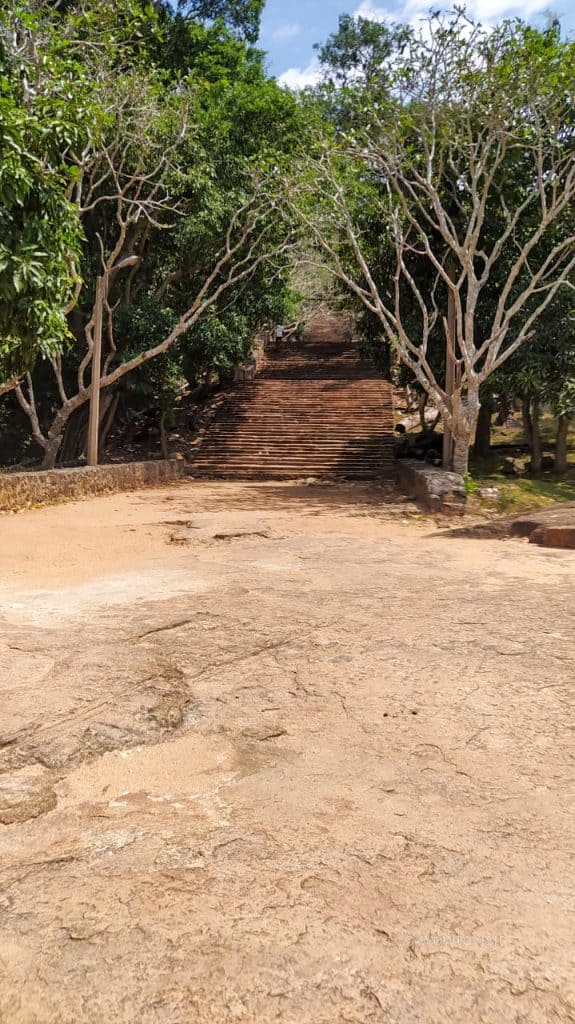
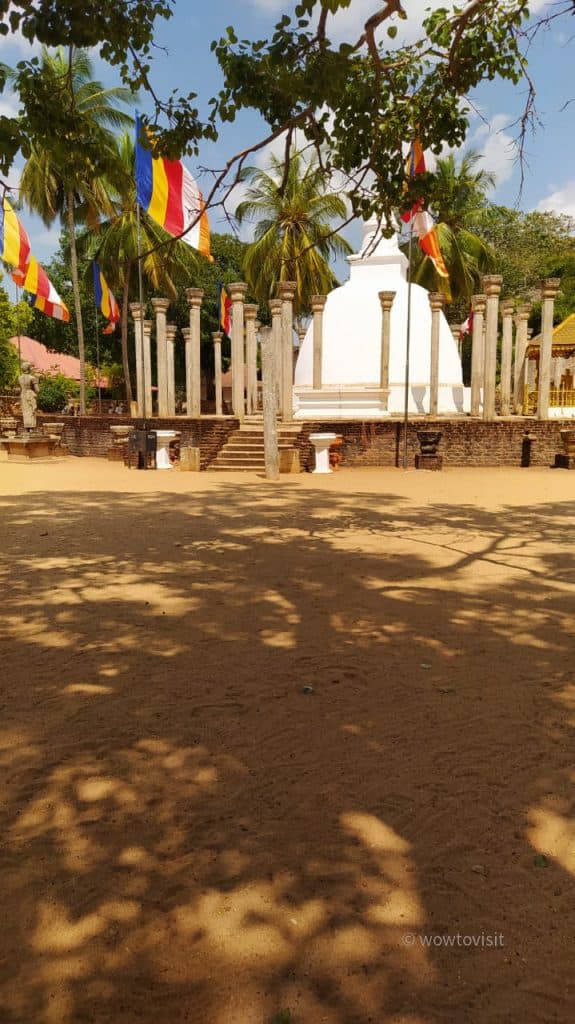
1. What is the best time to visit the Mihintale temple?
The best time to visit Mihintale temple is during the cooler months from November to February when the weather is pleasant and rainfall is minimal.
2. Are there any accommodation options near Mihintale?
Yes, there are several accommodation options available near Mihintale, ranging from budget guesthouses to luxury resorts. Anuradhapura, located nearby, also offers a wider range of choices.
3. Can I take photographs inside the temple complex?
Yes, photography is generally allowed inside the temple complex. However, it is advisable to be respectful of the surroundings and avoid using flash photography.
4. Are there any restrictions for non-Buddhist visitors?
Mihintale Temple welcomes visitors of all faiths. Non-Buddhist visitors are encouraged to respect the sacredness of the site and follow the guidelines regarding dress code and behavior.
5. How long does it take to explore the Mihintale temple?
The duration of the visit can vary depending on your interest and exploration. On average, it takes around 2 to 3 hours to explore the main attractions of the temple complex thoroughly.
6. Are there any dress code requirements for visiting the temple?
Yes, visitors are expected to dress modestly when visiting Mihintale Temple. It is recommended to wear clothing that covers the shoulders and knees as a sign of respect for the religious site.
7. Can you climb to the top of Mihintale Hill?
Yes, visitors can climb to the top of Mihintale Hill to reach the temple complex. However, it is advisable to take breaks along the way and stay hydrated, as the climb can be steep and challenging.
8. Are there any accommodation options near Mihintale Temple?
Yes, there are several accommodation options available near Mihintale Temple, ranging from budget guesthouses to luxury resorts. It is recommended to book in advance, especially during peak tourist seasons.
9. How can I contribute to the conservation efforts of Mihintale Temple?
Respecting the rules and regulations set by the authorities, minimizing waste, and being mindful of the surroundings are simple ways to contribute to the conservation of Mihintale Temple.
